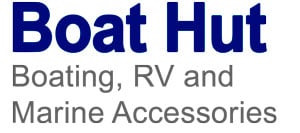Exploring Western Australia’s waters offers both excitement and responsibility. For boaters and anyone interested in water safety, knowing and following life jacket laws is essential for legal reasons and important for safety. This blog post is designed to give you a clear and informative guide to life jacket regulations in WA, paying special attention to rules for various types of vessels and where they operate. If you want to read more about the specific regulations please refer to the source article here
Life Jacket Requirements in Western Australia
Registrable Vessels Smaller Than 4.8 Metres
Protected Waters
When operating in rivers, lakes, estuaries, harbours, and waters within 400 metres from the shore, the law mandates the carrying of a life jacket (Level 100 or higher) for each person onboard.
Unprotected Waters
In scenarios where vessels operate beyond 400 metres from the shore in unprotected waters, it is compulsory for everyone onboard to wear a life jacket (Level 100 or higher).
Registrable Vessels 4.8 Metres or Larger
The requirements for vessels 4.8 metres or larger mirror those for smaller vessels, with the addition that in unprotected waters, children aged 1 to 12 years onboard must wear a life jacket (Level 100 or higher).
Personal Water Craft (PWC)
For those operating a PWC, all individuals onboard must wear a life jacket (minimum level 50s) at all times, in all waters.
Tenders, Sailing Dinghies, Paddlecraft, Kite and Windsurfers
In unprotected waters, when operating beyond 400 metres from the shore, everyone onboard must wear a life jacket (minimum level 50s).
Additional Safety Recommendations
Alongside the minimum legal requirements, there are several situations where wearing a life jacket is highly recommended for enhanced safety:
- At the first sign of bad weather.
- During night-time operations or in restricted visibility.
- When navigating unfamiliar waters.
- In conditions with a following sea.
- When boating alone.
- For children under 10 years, regardless of conditions.
- For individuals who are not strong swimmers.
Equipment Requirements for Different Waters
Protected Waters
For vessels smaller than 4.8 metres operating in protected waters, carrying a life jacket (Level 100 or higher) for each person onboard is required.
Unprotected Waters
For the same vessels in unprotected waters, additional safety equipment is necessary:
- A GPS-enabled Emergency Position Indicating Radio Beacon (EPIRB) or a worn GPS-enabled Personal Locator Beacon (PLB) by 1 September 2028.
- At least 2 handheld red flares and 2 handheld orange flares, with parachute flares acceptable until 1 September 2026.
- The option to carry Electronic Visual Distress Signals (EVDS) if a GPS-enabled EPIRB or PLB is present.
- A marine radio when operating beyond 4 nautical miles from shore, noting the phase-out of 27-MHz radios by 1 September 2028.
For vessels larger than 4.8 metres, the requirements in unprotected waters include the necessity for a life jacket for each person onboard and specific mandates for children aged one to 12 years.
Conclusion
Following life jacket rules is crucial for safe boating in Western Australia. Knowing and following these regulations helps boaters stay within the law and keeps everyone on board safe. A life jacket is key for safety on any boat, and using one can save lives. Make safety your top priority and responsibly enjoy WA’s beautiful waters. If you’re looking for regulations in other states, please read our article on Life Jacket regulations for Australia.




